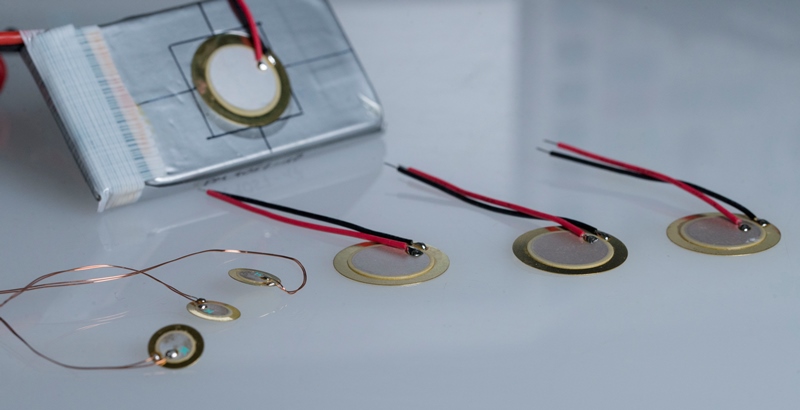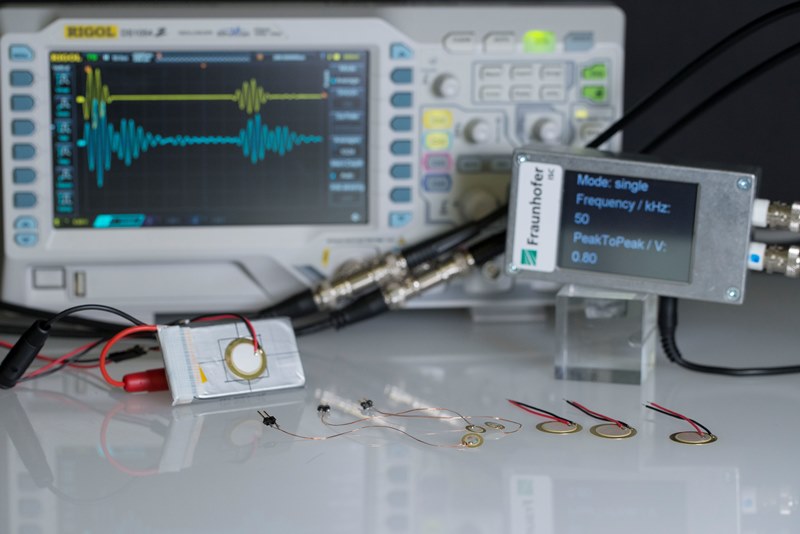SoCUS – New cost-effective sensor system to measure state of charge


Batteries are indispensable for electric vehicles and other mobile devices that require electrical power. Complex battery management systems (BMS) are needed to estimate, for example, the range and durability of the battery. Therefore, they determine the state of charge for each cell on the basis of Current (Coulomb Counting) and Voltage. As BMS calculations are based on default values, they are prone to error. Especially with frequent partial charge and certain battery cell types, no precise measurement of the state of charge is possible. In addition, these systems consume some of the energy themselves.
In the SoCUS project, the Fraunhofer R&D Center for Electromobility Bavaria is developing cost-effective sensor systems that can be integrated directly into the battery and can measure the state of charge more accurately than commercially available systems. The systems use ultrasound pulses to measure and evaluate the density of the negative anode which changes with the state of charge of the cell.
This method combines several benefits: Since there is a linear relation between state of charge and measurement signal, the evaluation is simpler and more accurate than known technologies. A measurement unit can monitor several battery cells at the same time and detects the state of charge only during charging and discharging, a permanent control is not necessary. This saves additional energy and costs. Since the ultrasound signal correlates directly with the mechanical properties of the cell, aging processes are better taken into account. This allows more specific conclusions about the remaining capacity and thus, the performance of the battery.
The new sensor system is suited for all kinds of battery types but has been especially tested for Lithium-ion batteries. Typical fields of application are electric vehicles, stationary storage systems, and drones.
More information
Journal of Power Sources, Volume 343, 1 March 2017:
Probing lithium-ion batteries' state-of-charge using ultrasonic transmission